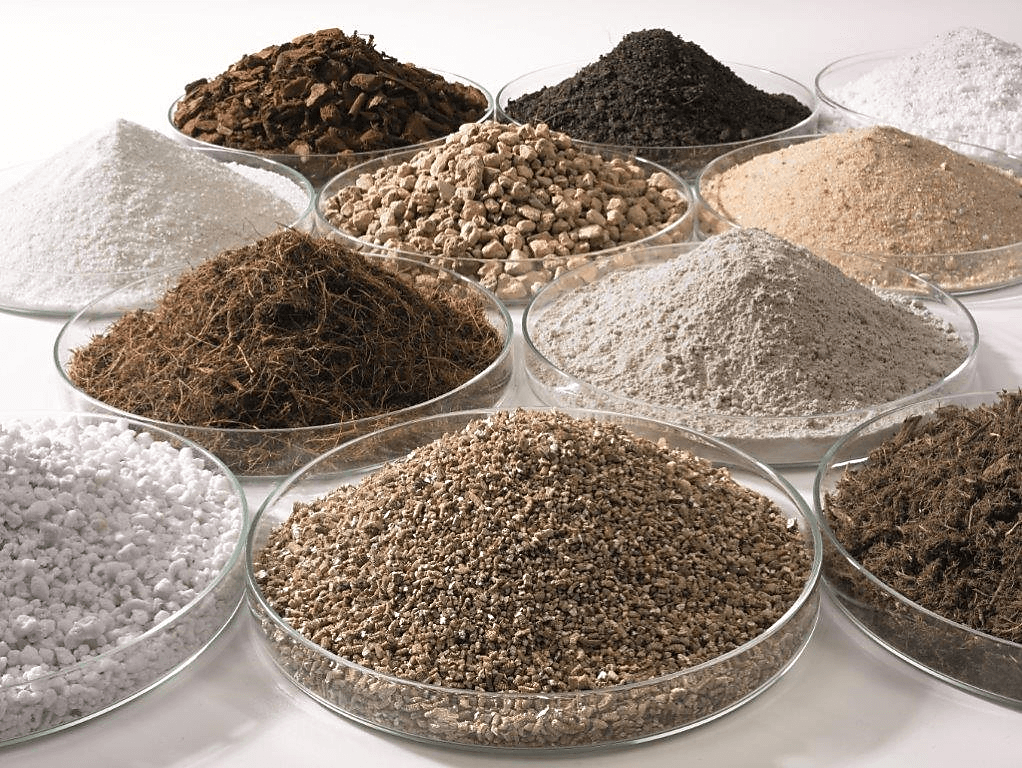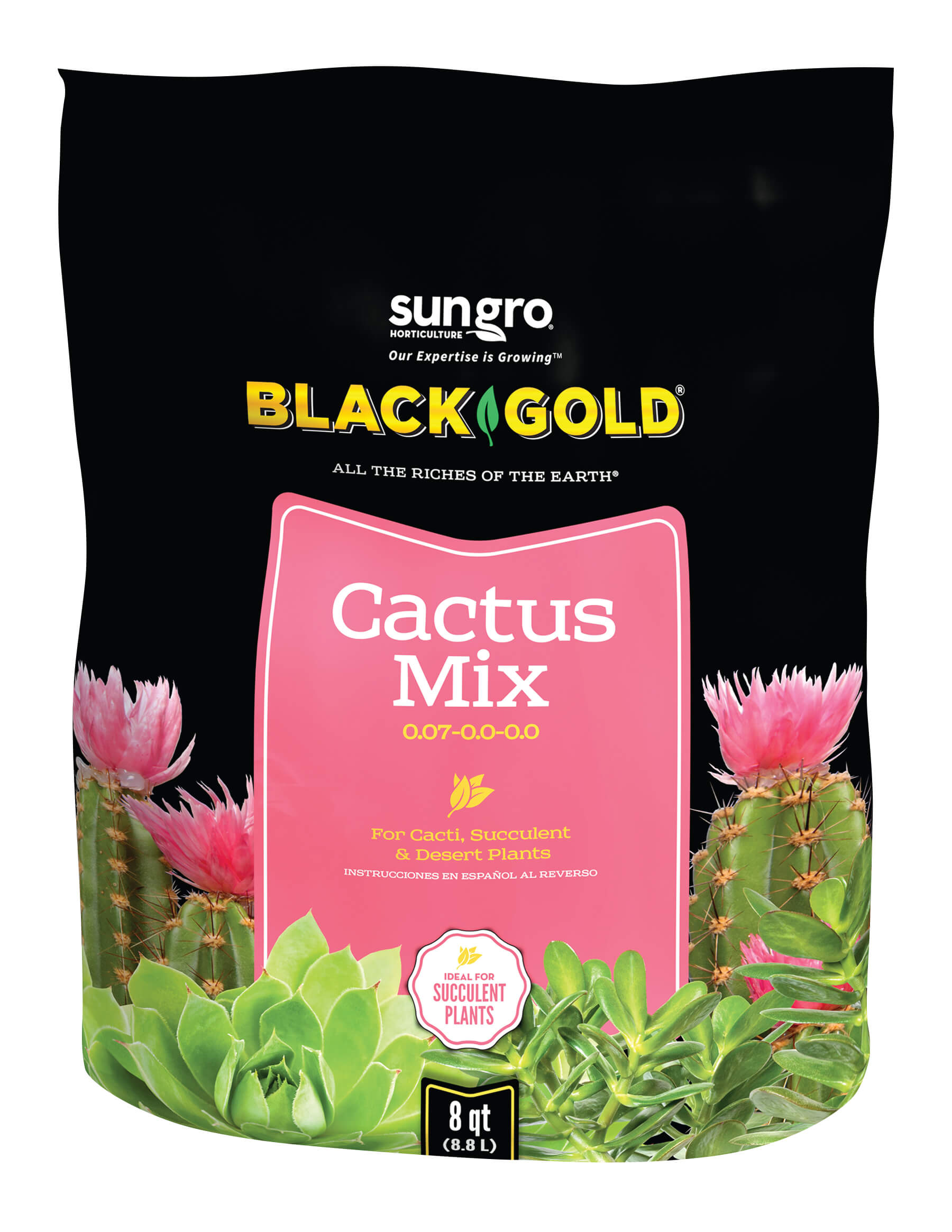
I belong to the Michigan Cactus and Succulent Society, and I like to create my own mixes. To perfect my blends, I am always trying to figure out what materials will provide the characteristics I need for drainage, aeration, water-holding capacity and so on. I also want to understand how particle size impacts the performance of primary mix materials. Does the blend of ingredients matter the most or the particle size? Depending on the plant, I add pumice, perlite, Turface® and/or chicken grit in varying proportions to increase mix drainage. Which of these items will increase drainage and lessen root rot due to organic additives? I tend to under water and don’t water the cacti in the winter. Plus, I bring many of my plants outside in the summer (some of them) where they are subject to unpredictable weather, rain, heat, humidity. What mix will best help them under these conditions? Question [shortened] from Carol of Harrison Township, Michigan
Answer: I will try to address all of your questions in full. Covering different cacti and succulent mix ingredients and their characteristics is a good start.
Mix Ingredient Qualities

Let me start by saying that the particle size does impact porosity and therefore aeration and drainage. Larger particles mean more air space and less water-holding capacity. All of the mineral additives you mention will increase drainage and lessen the chance of root rot as a consequence. Here are the main C&S mix components and their characteristics. (Keep in mind, some of the products mentioned we do not carry.)
Organic ingredients with high water-holding capacity: Coconut coir, compost, earthworm castings, and peat moss. All of these ingredients hold moisture, and many also contain beneficial microbes and natural nutrients (earthworm castings and compost). It is essential to include some organic ingredients to cacti and succulent mixes. Those with low nutrient value, such as peat moss and coconut coir, are best if you want to establish your own controlled feeding program.
Inorganic ingredients with high water-holding capacity: Vermiculite and Turface®.
Organic ingredients with low water-holding capacity that increase porosity and drainage: Bark.
Inorganic ingredients with low water-holding capacity that increase porosity and drainage: Cinders, Gran-I-Grit, fine lava rock, perlite, pumice, coarse sand, small pebbles, and rock dust.
Cactus and Succulent Mix Recipes
As you know, different cacti and succulents have different levels of tolerance with respect to organic matter and drainage. You could always plant in bagged succulent mix, such as Black Gold Cactus Mix, which contains a very high percentage of horticultural perlite in addition to pumice and cinders and a low percentage of earthworm castings, compost, and bark. But if you are keen to mix your own, start with the general formula.
 Cacti and Succulent Mix Formula: Most professional cactus and succulent mixes by volume are 50% solid (45% mineral, 5% organic) and 50% pore space (25% air space and 25% absorbed water). Recipes vary far and wide, but it’s wise to not stray too far from this formula. Here are some succulent mix recipes that you might consider.
Cacti and Succulent Mix Formula: Most professional cactus and succulent mixes by volume are 50% solid (45% mineral, 5% organic) and 50% pore space (25% air space and 25% absorbed water). Recipes vary far and wide, but it’s wise to not stray too far from this formula. Here are some succulent mix recipes that you might consider.
Recipe 1: 30% (three parts) coarse sand, 30% (three parts) fine rock like Gran-I-Grit, pumice, etc., 30% (three parts) coconut coir, 10% (one part) compost.
Recipe 2: 50% (five parts) perlite, 30% (three parts) all-purpose potting mix, 10% (one part) coarse sand, 10% (one part) rock dust.
Recipe 3: 30% (three parts) fine bark, 30% (three parts) Gran-I-Grit, 20% (two parts) Turface®, 10% (one part) compost.
Growing Potted Cacti and Succulents Outdoors in High-Rain Areas

This one is easy. I bring my many cacti and succulents outdoors in summer, too. To protect them from excess moisture, I keep the pots on my sunny porch and below eaves away from heavy rain. A covered patio would also be ideal.
Still, I find that the hardy succulents and cacti in my Mid-Atlantic yard perform well, even through hurricane weather and cold winters, because they are planted in high rock gardens with sharply drained soil (Black Gold Cactus Mix plus added pebble and compost). I also mulch them with a cover of pebbles to keep any succulent parts from touching surface soil.
I hope that these tips help. Please let me know if you have any additional questions.
Happy gardening!
Jessie Keith
Black Gold Horticulturist
